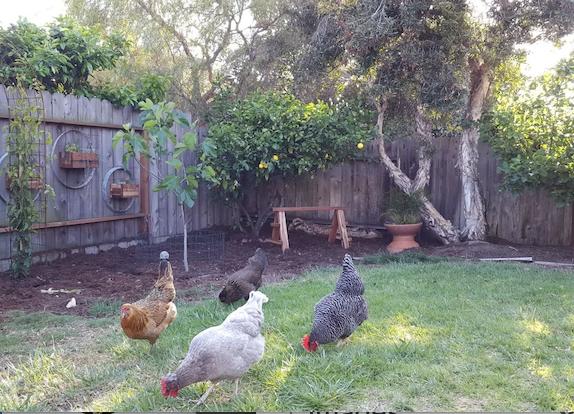If you prefer eating organic foods, enjoy growing your own vegetables, and are conscientious about pesticides and the environment, chances are that you have considered keeping chickens. Chickens make an excellent gardening companion, they enjoy chasing down plant destroying insects like grasshoppers, grubs, and beetles. Chickens are ground birds with strong feet that are meant for digging and scratching in search of food. Busy chickens till the soil by turning leaf litter, giving the soil a natural boost.
According to Mother Earth News, over 13 million tons of grass clippings, leaf, and yard waste was sent to U.S. landfills in 2021. Chickens love and will happily eat leaf and yard waste. Chickens lay around 250 eggs a year, Americans eat an average of 263 eggs a year. Pet chickens’ eggs have been proven to be higher in omega-3 acids and vitamin E than factory farmed eggs.
The little town of Limburg, Belgium offered 3 chickens to 2,000 households as an experiment in 2010 to cut down on household waste. Belgian officials have reported that the chickens are a huge success, organic waste has been cut in half and the families have gained a supply of free, fresh eggs. With the price of eggs getting higher each week, people love collecting their own freshly laid eggs from their own backyard chickens.
As inflation hit all areas of spending, Canadians are supporting urban food security by raising egg laying hens in their backyards. Paul Hughes, director of Grow Calgary, has long been a proponent of urban chickens, he says that families that choose to have hens will improve their household food security. While planting vegetables in your backyard allows people to grow their own food, sources of complex protein are harder to come by, that’s where chickens come in. Their size makes them a good fit for an urban environment. Chickens eat table scraps and a bag of feed is very inexpensive.
An estimated 12 million people in the U.S. now own backyard chickens. The appeal of chickens is that they are relatively low maintenance, they don’t need a lot of land and coops can be purchased on Amazon or at Lowe’s. A small but rapidly growing slice of the American population has become interested in growing and raising food at home, a trend that began during the pandemic and has been invigorated by the shortages it caused. The average price of a dozen eggs in December 2021 was $1.79 compared to $4.25 in December 2022.
My family has been raising chickens for over 10 years, there isn’t a better egg than one laid by your pet chicken. For my effort I get eggs that are far superior to the best organic ones at the grocery store. My chicken’s egg yolks are bright orange as a result of a diet of veggies, herbs, fruit, and organic chicken feed. As Hippocrates said, “food is medicine” and I know exactly what my chickens eat in a day, not the case with store bought eggs.
My chickens are delightful and silly, they are at the coop door every morning greeting me with their cheerful clucks. This flock is two years old and just finished a two month molt, it was sad to see my usually fluffy birds losing their plumage. It was also sad to have to buy eggs for baking. Luckily, the days are getting longer and the girls are laying again.
If you’re considering your own backyard flock, Chesapeake Seed and Feed in Cambridge is the best resource for everything regarding chickens. The owner is knowledgeable and will carry everything out to your car. They stock locally made chicken feed and even sell baby chicks in the spring.
Kate Emery General is a retired chef/restaurant owner that was born and raised in Casper, Wyoming. Kate loves her grandchildren, knitting and watercolor painting. Kate and her husband , Matt are longtime residents of Cambridge’s West End where they enjoy swimming and bicycling.



Jazmin Rivera says
While reading this article, this has got me thinking, how much percent was actually cut down in the little town of Belgium? I have searched the internet and cannot find information on how much percentage Limburg, Belgium had before 2010 and how much percentage was cut down. I would like to know the % before 2010 and the % after the experiment.